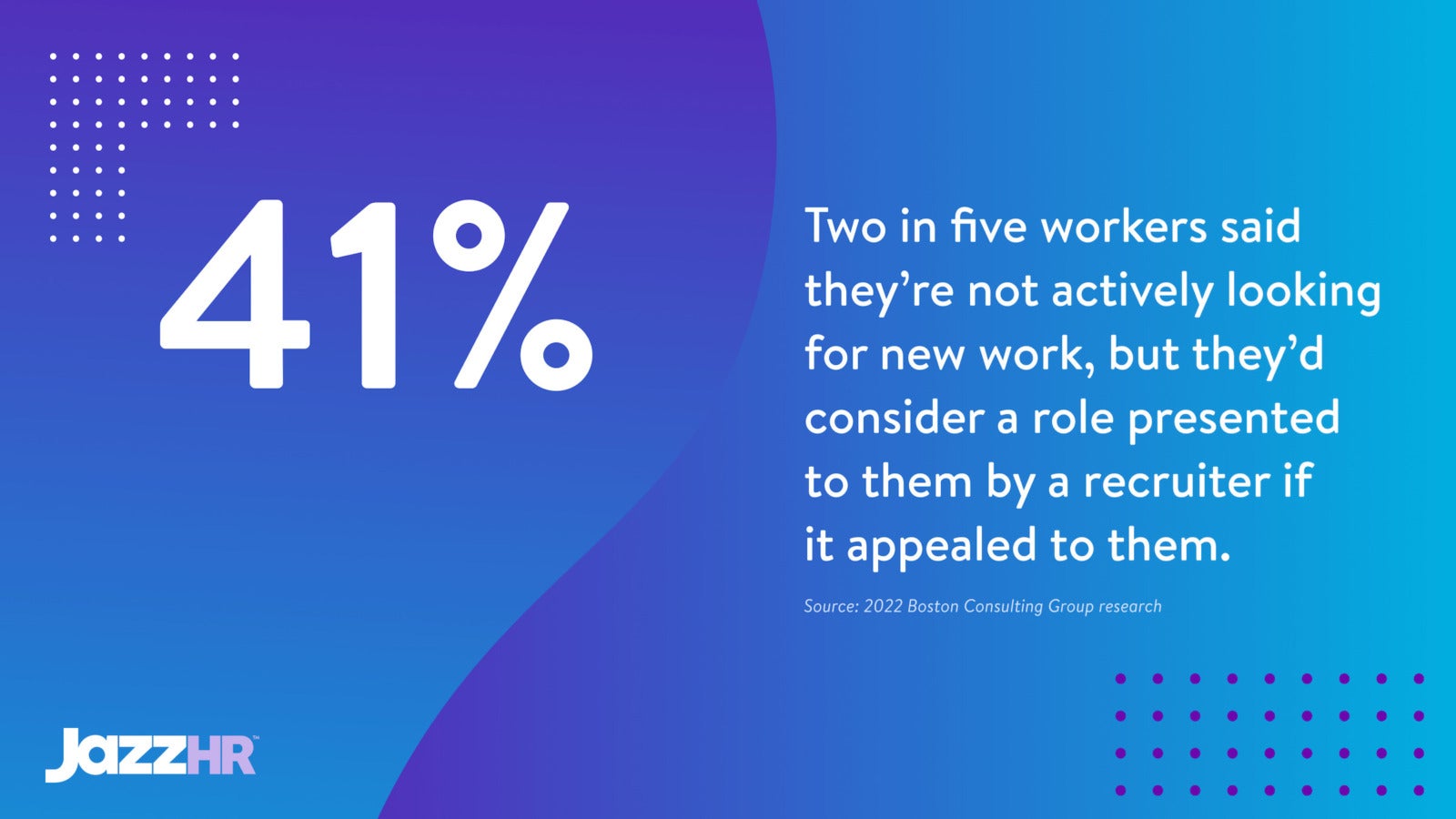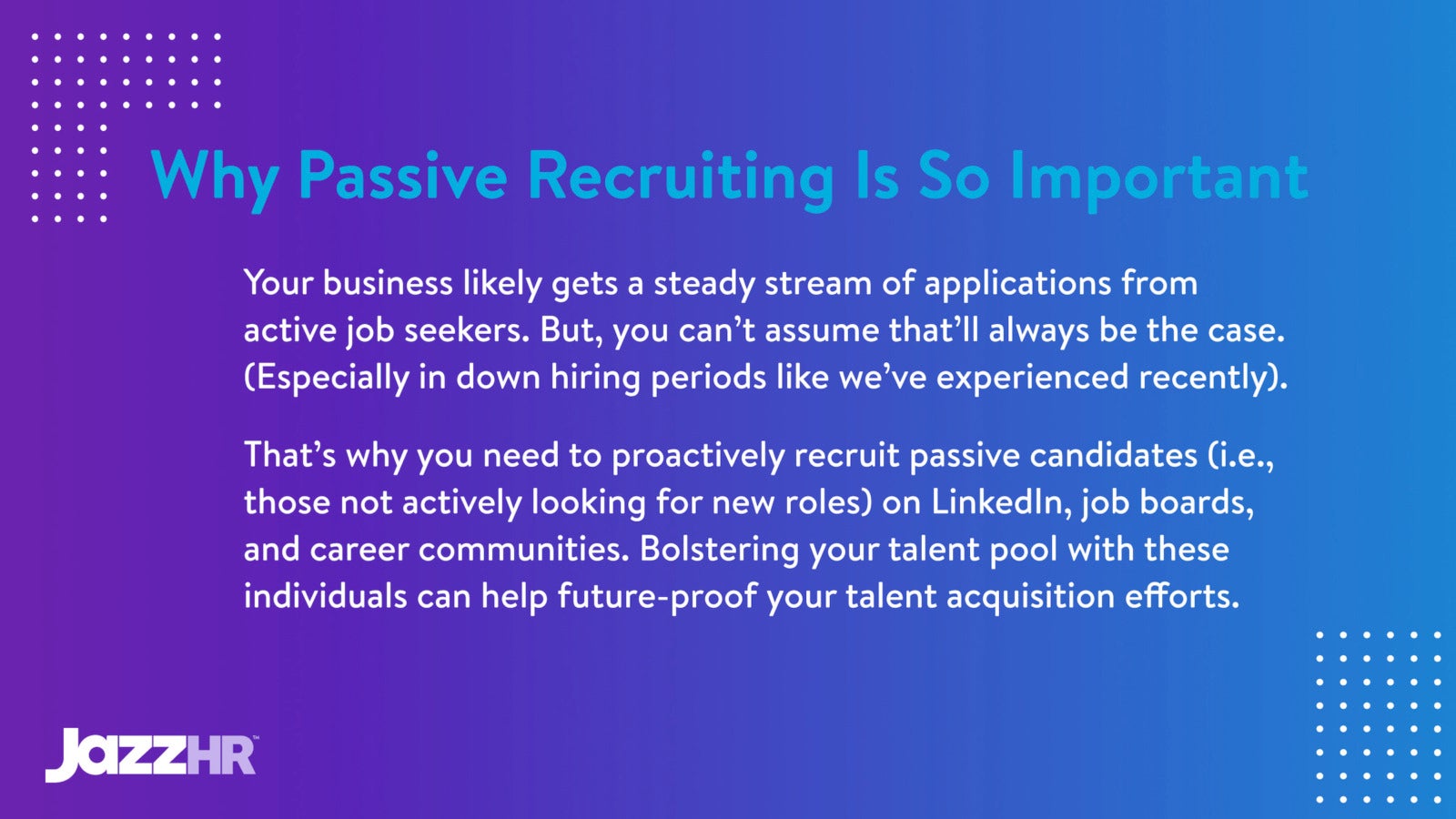Guest Blog by Ruehie Jaiya Karri, Blogger-In-Chief, HackerEarth
Getting a steady stream of active job seekers applying for open roles across your business via your careers site and job boards certainly plays a pivotal role in the success of your recruitment process.
But, don’t forget about the need for a passive recruiting strategy — one in which your talent acquisition team regularly recruits passive candidates who “fit the bill” for job openings.
4 reasons why passive recruiting is so important
Passive recruitment (a.k.a. proactive sourcing) targets passive candidates (as you might’ve suspected).
Applicants will enter your talent pool on their own (so long as you have a strong employment brand and recruitment marketing approach). And you’ll likely get a lot of recommended prospects via your employee referral program. But, that doesn’t mean you can afford to “skip” passive recruiting.
It’s a long-term strategy to keep non-active candidates engaged — via a mix of personalized nurture emails and phone calls — until a job opening that aligns with their skill set and expertise emerges.
More than 80% of passive job seekers say they would entertain a career change if the right opportunity came along (i.e., an employer with competitive pay and a strong company culture) .
This shows that it’s important to build your talent pipeline with passive candidates and make engaging these individuals a focal point of your small business’s talent acquisition strategy.
Here are four reasons your recruiters (and even hiring managers) should focus on passive recruiting today.
1) Smarter candidate sourcing
Passive recruiting works best when you are proactive about it. Instead of waiting for a vacancy to arise, you can kickstart your recruiting efforts ahead of time and work on building your talent pool.
Scout for suitable profiles on social media, and begin a conversation with them. You may discover they are dissatisfied with their current job and might be interested in a new opportunity.
- Another great way to add qualified candidates to your pipeline is when you have hundreds of applicants for a single role, but only one is selected. Keep the remaining candidates engaged until a new role opens up.
Just because they weren’t hired for this role does not mean they won’t be a good fit for the next one.
When you do need candidates for a new position, you have your fresh talent pool to start with, instead of beginning entirely from scratch. If you’re hiring for niche roles, this is especially true.
2) Skills, skills, and more skills
A passive candidate who is currently working at an organization will likely have the skills and expertise required for the role you were looking for. You can also vet their skills by speaking with colleagues or teammates, or checking their portfolio that outlines projects they’ve worked on.
Passive candidates have a higher employability rate as well as greater chances of being successful hires. For instance, if you’re looking for a skilled Java developer, and they’re currently employed as one, then you know they’ve got just what you’re looking for.
3) Edge on your competitors
It is no secret top talent that is actively looking for a job are off the market quickly When you set your sights on “passives,” there’s no race to close that one talented candidate who everyone is vying for.
You don’t have to worry about counter-offers because you know a lead is interested in your company. Also, there’s a strong chance you find candidates your competition may not even be looking for.
Instead, you can spend time building and nurturing strong relationships with candidates who will not only be an asset as employees, but can serve as a great referral source for future potential hires as well.
4) Stronger employer brand
Credibility and authenticity go a long way in this profession. Enter your company’s employer branding.
If you focus on cultivating a strong relationship with your passive candidates and showcase a robust employer brand, they will reach out to you first when they begin looking for a new opportunity.
What if you pursue a passive candidate, and — despite your best efforts — they aren’t prepared to switch jobs just yet? Well, you can simply look on the flip side. If you’ve created a good first impression and ensured they had a positive candidate experience, they’ll remember your company, be more likely to apply for roles there in the future, and even refer people to your company.
Implementing a dedicated passive recruiting approach
Passive recruiting focuses on the long term. It’s all about routinely identifying staying in touch with passive candidates to keep them engaged and interested until the right opportunity surfaces.
While the “lift” of sourcing and nurturing is heavier on the front end of your recruitment funnel, the result is invariably a steady increase in your overall quality of hire and a decreased time to fill.
Want to improve your passive recruitment? Learn how JazzHR’s powerful ATS for SMBs can help.








